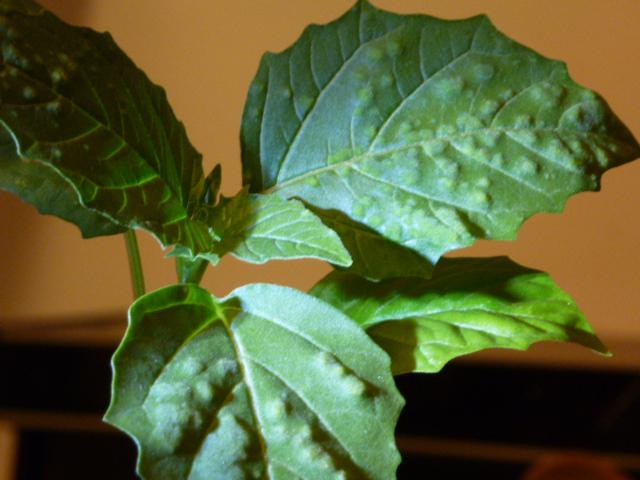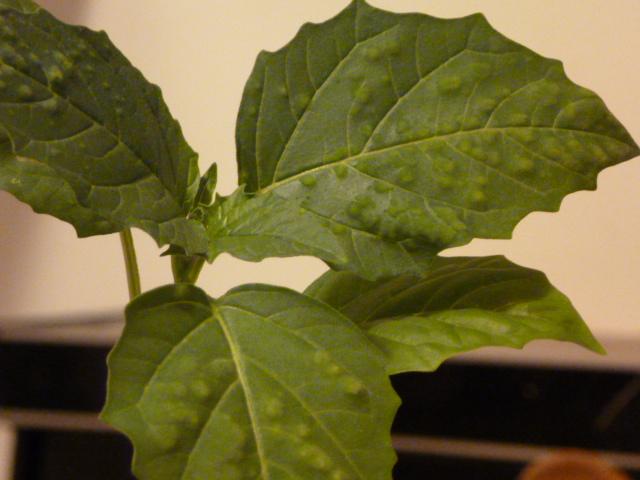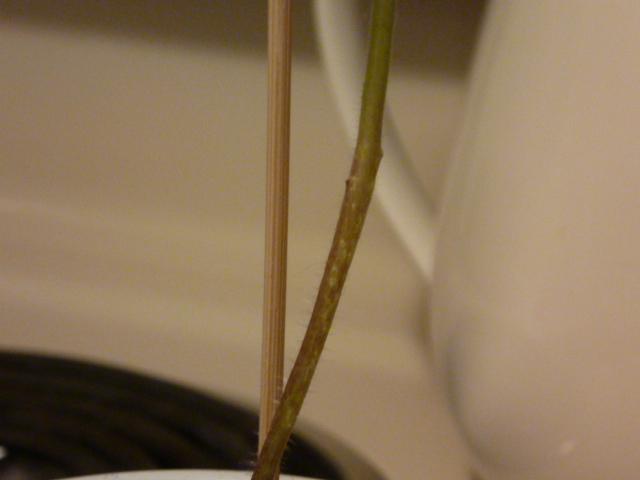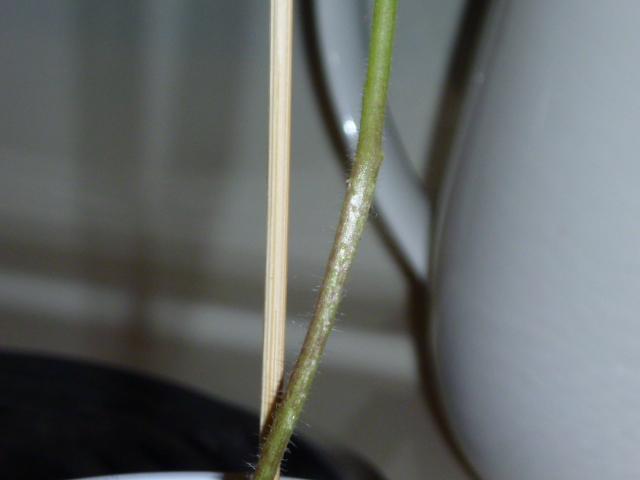I regularly put my seedlings in the south-facing window at the front of my house - it has been too cold to take them outside yet. However, we actually had a sunny day up to 72F the other day, so I hauled them outside for a bit. All of the peppers came back as happy little buggers. However, my single tomatillo plant didn't come back so well. Well, I didn't look closely at it until the next day, and found "loverly" bumps on some of the leaves, and bumps down the stem a way. The next two shots are of the leaves, same angle (camera on a tripod), but with different lighting - first with a flashlight held to the side, second with no lighting other than the room light. The bumps have the appearance that someone tried to push something into the leaf from the back side - the back is hollow under the bumps, not flat. Most of the bumps are "just" bumps, but some (when looked at under a jeweler's loupe) appear to have the upper leaf surface open - almost like a blister that's been burst.


The stem has some little white-ish bumps on it. When examined with the jeweler's loupe, these have more of the appearance of a small pimple - they are clearly not bugs simply sitting on the stem. I ran my fingernail over one, and it kind of behaved like a pimple, too - it broke the surface and a bit of plant juice came out - so it's not like I simply moved a bug. My apologies for the quality of the stem pics, but these are the best I could get.


My first thought was sun-scald. I haven't eliminated this as a possibility, but it seems odd that it tolerated the front window fine for several more hours than it was outside, especially given that none of the peppers came back like this - I have 28 pepper plants at different stages of development that went outside with it, so it would seem at least one of them would have had similar results if it was sun scald. However, I also recognize that tomatillos aren't peppers - maybe there's something in that.
At any rate, if you've seen something similar and have some insight, I'd appreciate hearing what you think it might be.
G


The stem has some little white-ish bumps on it. When examined with the jeweler's loupe, these have more of the appearance of a small pimple - they are clearly not bugs simply sitting on the stem. I ran my fingernail over one, and it kind of behaved like a pimple, too - it broke the surface and a bit of plant juice came out - so it's not like I simply moved a bug. My apologies for the quality of the stem pics, but these are the best I could get.


My first thought was sun-scald. I haven't eliminated this as a possibility, but it seems odd that it tolerated the front window fine for several more hours than it was outside, especially given that none of the peppers came back like this - I have 28 pepper plants at different stages of development that went outside with it, so it would seem at least one of them would have had similar results if it was sun scald. However, I also recognize that tomatillos aren't peppers - maybe there's something in that.
At any rate, if you've seen something similar and have some insight, I'd appreciate hearing what you think it might be.
G

